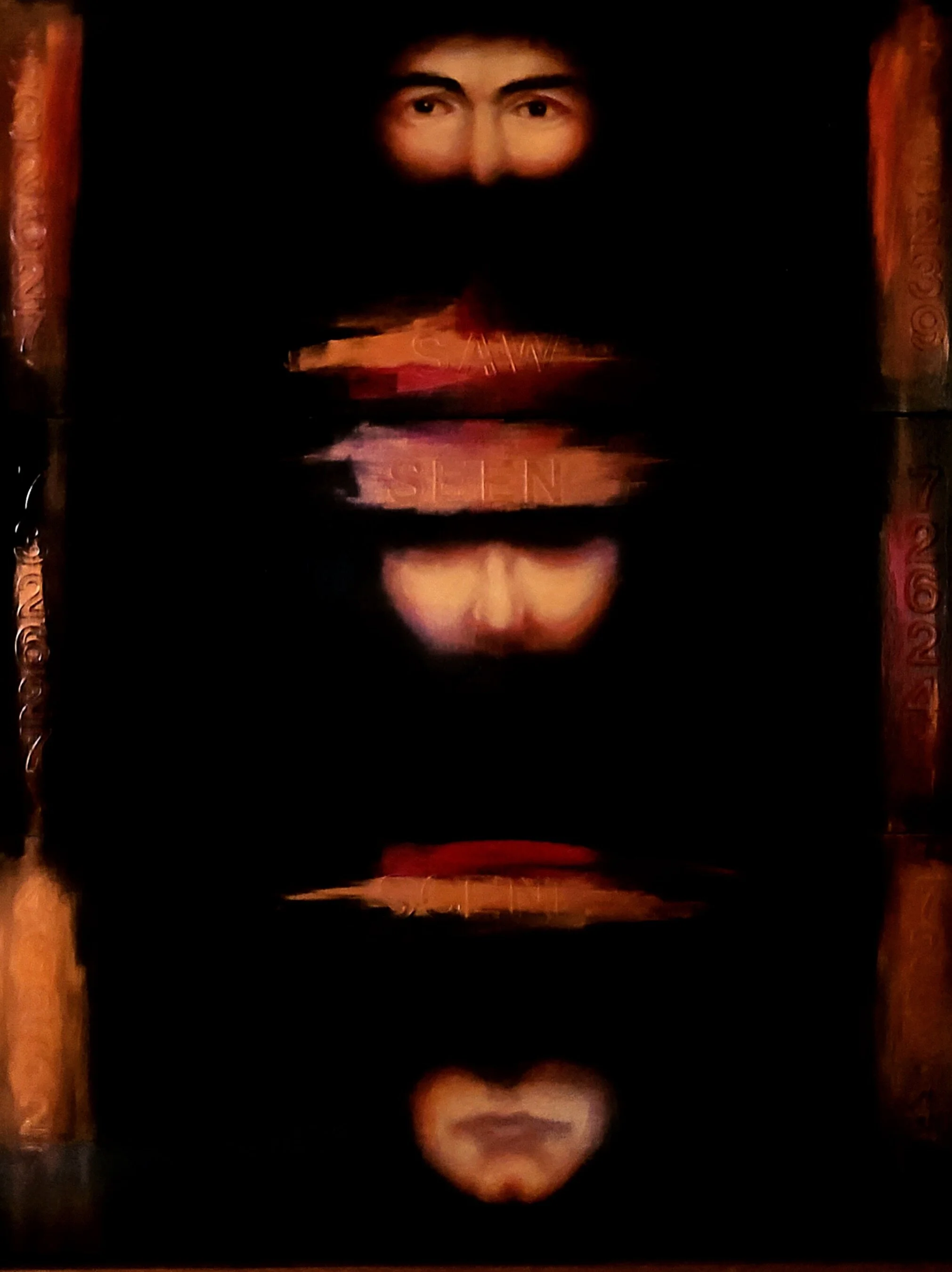![SHANE GUFFOGG: SELF PORTRAITS, PART 3]()
Shane Guffogg: Self-Portraits, Part 3
(conversation between Victoria Chapman and artist continues)
In Part 3, we enter the worlds of Henri Matisse and Pablo Picasso. I spent time researching the artists and some of their life experiences that shaped many compositions and self-portraits. I had more questions for Shane Guffogg, which he carefully shared his personal takes on, giving me a deeper understanding. This led me to draw curious parallels between the artists of the past and Guffogg, parallels that reveal more and more about his work.
V.C: Henri Matisse (1869-1954) was another artist that advanced modern art, but not without hardship. It took until almost the end of his career for the public to understand his work. Matisse also created self-portraits, utilizing different styles and mediums: etchings, paintings, simplified line drawings, etc. I learned from my research that Matisse valued painting the relationships between objects rather than just the objects themselves. He’s known for his still lifes and portraits. He eventually made paper cut-outs, which would become the most-known works of his career. The artist was also known for painting his own spirit into his works; not his recognizable face, but his presence within the scenes he painted. He not only recreated the world around him in a dazzling array of colors and lines, but he also painted a life force within it. In the Chapelle du Rosaire de Vence, which is decorated in colored stained glass and black line drawings, Matisse displays his version of Stations of the Cross. The colored stained glass cascades on the visitor, sharing space within the white walls – color from the light is the environment.
Read More
![SHANE GUFFOGG: SELF-PORTRAITS, Part 2]()
Shane Guffogg: Self-Portraits, Part 2
(conversation between Victoria Chapman and Shane Guffogg continues)
We continue the dialogue by exploring the work of Vincent van Gogh, Edvard Munch, and Paul Cezanne. We share the developments of why these artists made it their sole purpose to create art.
VC: Vincent Willem van Gogh (1853 – 1890) was an artist whose personal history and legacy is just as famous as his paintings. The son of a pastor, Vincent grew up with core religious and spiritual beliefs that followed him throughout his turbulent life. Floating from one occupation to another, he worked as an art dealer, teacher, missionary and finally found his true calling as an artist. How do you think this played out in van Gogh's art?
Shane Guffogg: That is an interesting question. On one hand, the two occupations of a missionary (or preacher) and an art dealer are polar opposites. However, what would happen if the two were merged into one? Art and religion? That outcome is spirituality, and in van Gogh's case, is manifested through the act of seeing, observing, and ultimately translating his emotional experiences through paint. His mature work reveals his love of the beauty he sees in nature. His objective, I think, was to convince his viewer of the spirit and presence of God. That knowledge or message could create a spiritual awakening, setting his audience on a path of enlightenment. That is the work of a true missionary!
Read MoreShane Guffogg: Self-Portrait, Part 1
The artist and their psychological state transmitting its way through history.
Conversation between Victoria Chapman and Los Angeles based international artist, Shane Guffogg.
The history of self-portraits dates back centuries – they are easy to spot in early Egyptian art, Greek/Roman Mythology, and more. It’s no surprise that upon exiting the Middle Ages and entering the 15th century or early Renaissance – when artists began to separate from kingdoms – the self-portraiture became more common in search of identity and questioning of humanity.
Read More

